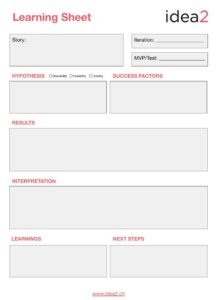What is it that you want to find out? Is your story based on assumptions?
Notice: You don’t start from zero! Use similar experiences from other projects or some early customer feedback as a starting point.
Put down a statement as precise as possible. The more precise the hypothesis is formulated, the easier it will be for you in the following steps.
Three Areas
You can choose one of the three areas. In the end, your value proposition has to match all of them. However, for one iteration or one test, it’s best to focus on just one of them. This will make your test easier and help you to better understand your results.
Desirability: Does the customer want it? Does she/he even understand it?
Viability: Is the customer willing to pay? Can I make it a (scalable) business?
Feasibility: Is the solution (technically) possible to achieve?


